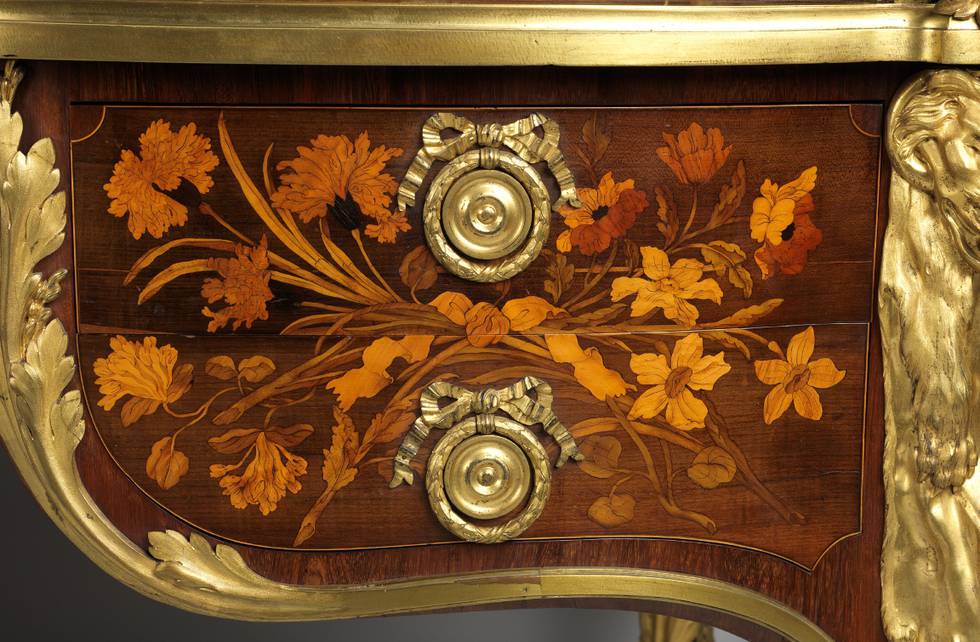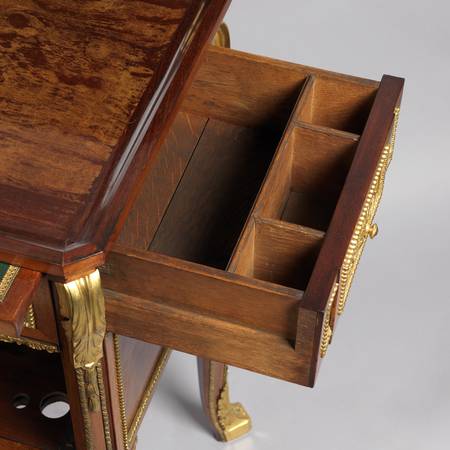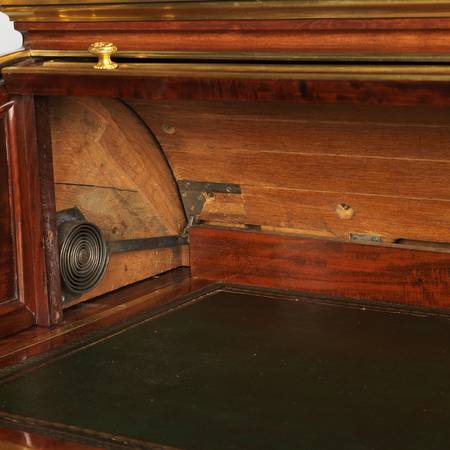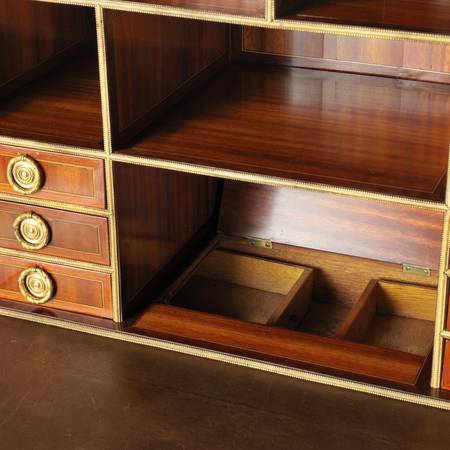The Wallace Collection has recently completed a major five-year research project into Riesener’s furniture that involved both the conservation and curatorial departments of the museum. By closely studying the large collection of Riesener furniture in the Collection, its aim was to shed light on the workshop practices, materials, and techniques used by the great 18th-century cabinetmaker.
In a purposefully different approach to that taken before by historians of Riesener, the Wallace Collection Project tried to bring a greater understanding of the materiality of the objects and the skills and innovations that he brought to the business of furniture-making.
Two other collections in Britain hold internationally important pieces of Riesener furniture — Waddesdon Manor and the Royal Collection — and early on in the Project, it was decided that the scope would be greatly enhanced by the involvement of these two collections. We are delighted that a close collaboration followed, with curators and conservators in all three institutions working together. This allowed the in-depth analysis of thirty pieces of furniture across the three collections, many of which had been made for the royal court of Louis XVI and Marie-Antoinette.
This comprehensive group of objects provided the starting point for what was the first ever major research project dedicated to Riesener and his workshop. Despite the continuing popularity of Riesener’s furniture throughout the centuries and the high status it enjoys in museums and on the art market, there has been no monograph on Riesener and very little has been written about him in English. This Project aimed to fill that gap with the first methodical study of his work.
Unlike previous research, which considered Riesener in the context of his patrons, this was also an object-based study, focusing on Riesener’s work as a cabinetmaker. We treated the furniture as evidence, as source material to tell us more about his workshop and his business practice. The leads of enquiry thrown up by this unique ‘bottom-up’ approach were rich and exciting and involved art historians, conservators, scientists and digital specialists.
Investigating Riesener
One other aspect studied during the Project was the history of collecting Riesener furniture. All three collections taking part in the study were put together by British collectors in the 19th century, after Riesener had died. George IV, the 4th Marquess of Hertford and Ferdinand de Rothschild were the foremost collectors of their age, spanning the entire century.
It is a fascinating phenomenon that Riesener furniture is not known to have been bought by British buyers in the 18th century, but by 1850 his name had become a byword for all that was elegant, sophisticated and admired in Louis XVI-period furniture. This Project looked at the development of this fashion, studying the changing tastes of the 19th century and the legacy that Riesener left behind.




